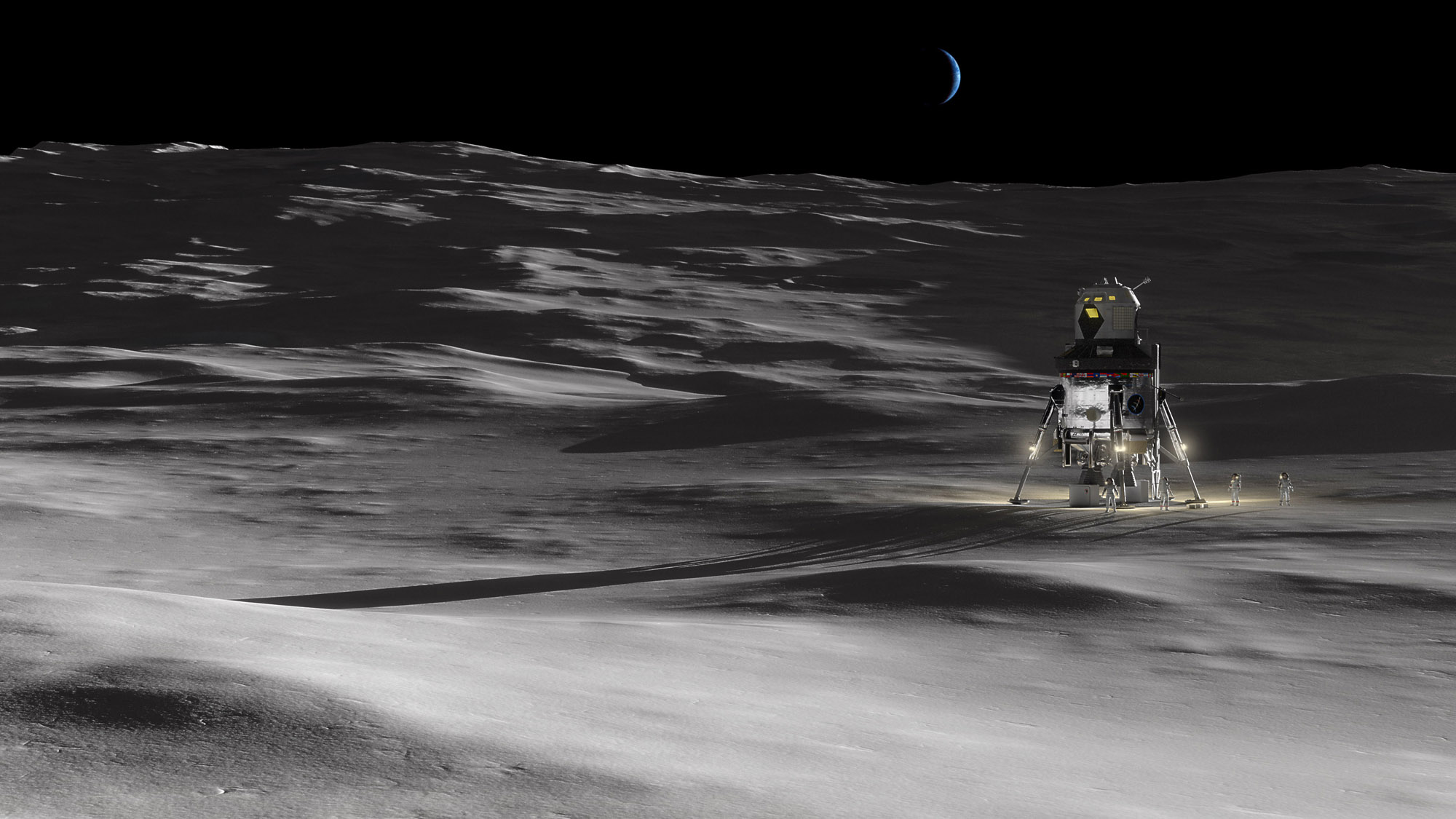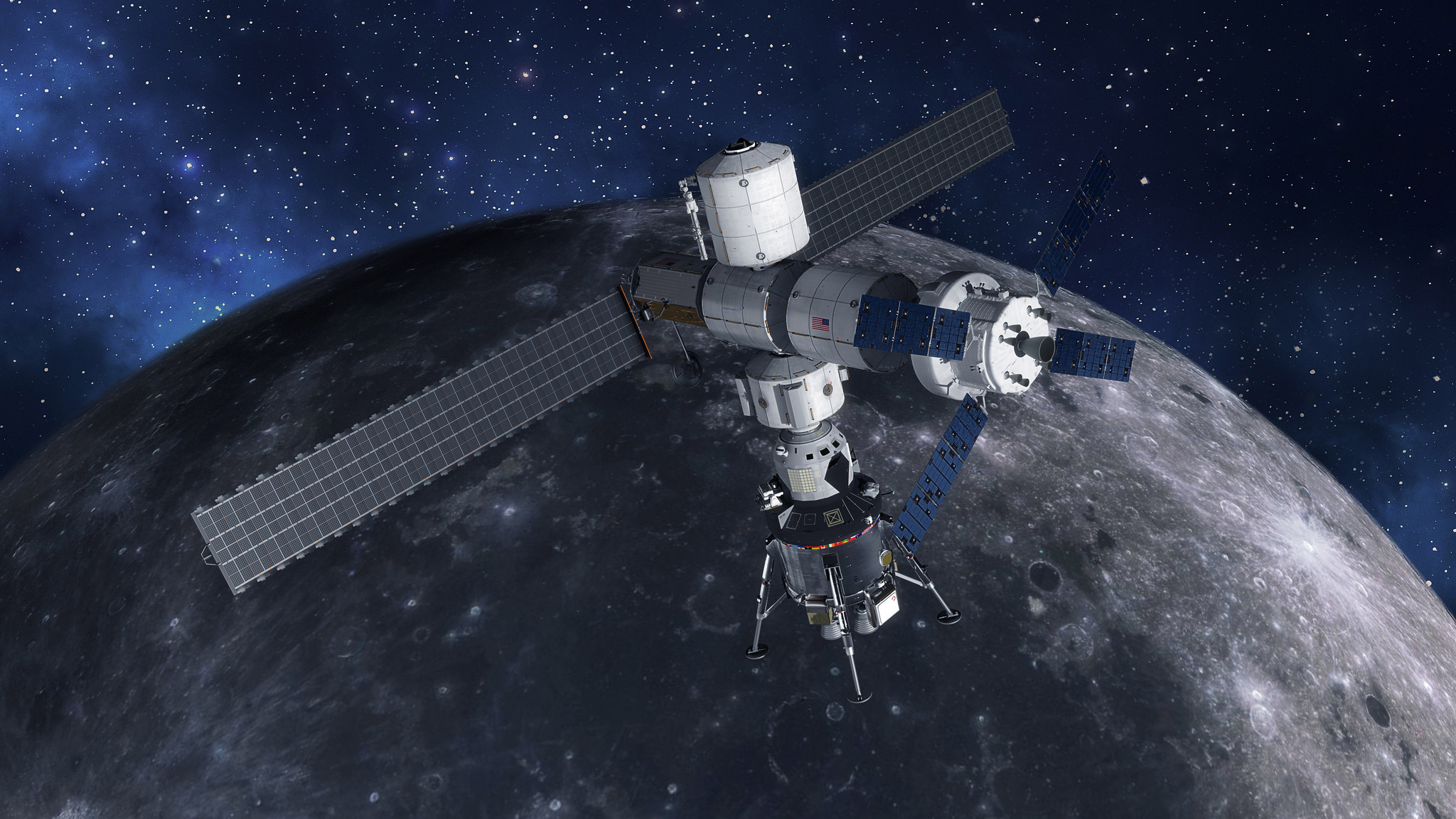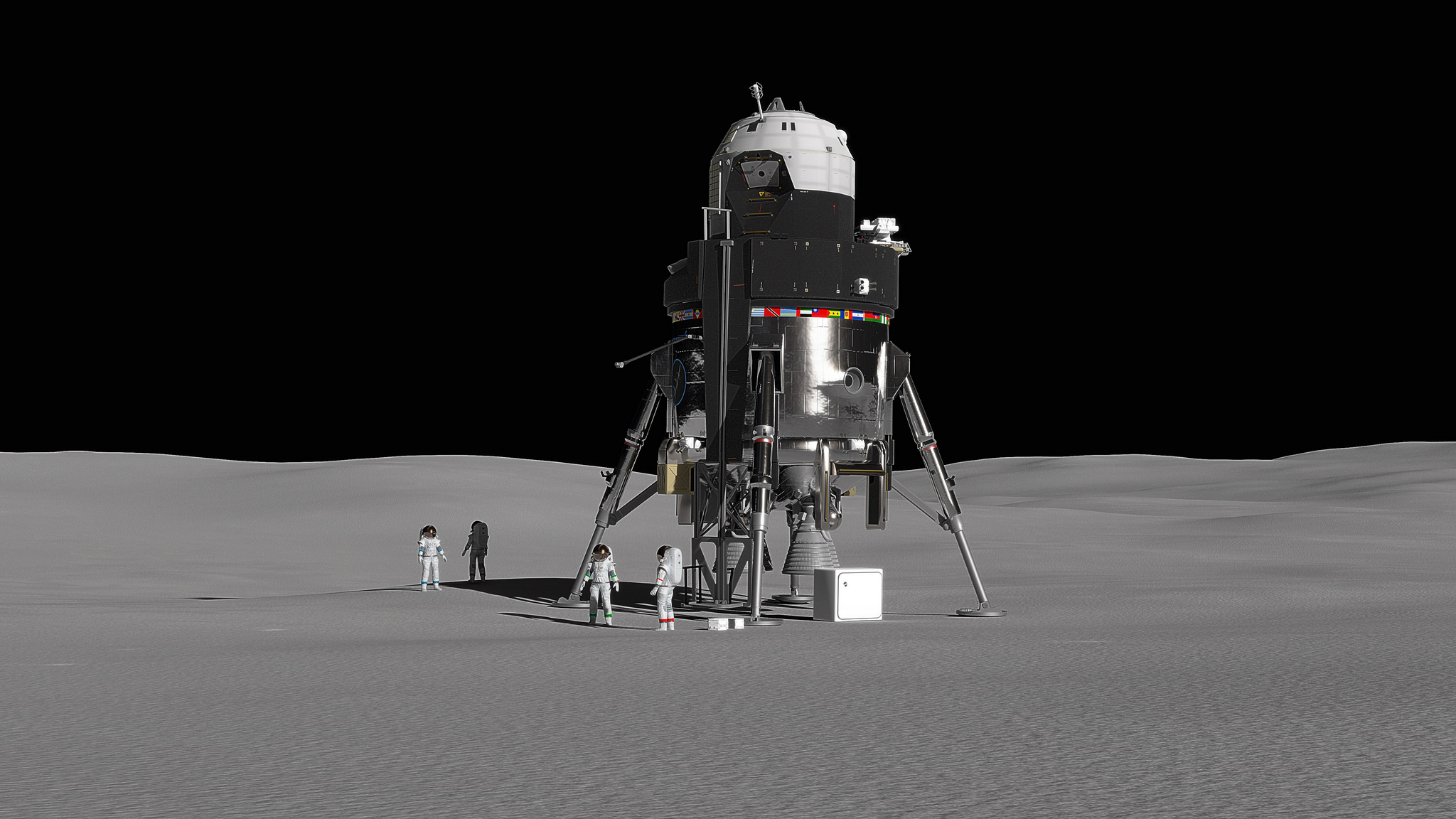Lockheed Martin Unveils Plans for Huge Reusable Moon Lander for Astronauts
This isn't your grandfather's lunar lander.
Today (Oct. 3), aerospace giant Lockheed Martin revealed its concept for a reusable, single-stage spaceship capable of ferrying four astronauts between lunar orbit and the surface of the moon.
For comparison, the expendable lunar lander that NASA used during the Apollo program carried two people and weighed 4.7 tons (4.3 metric tons) without propellant. Lockheed's craft would weigh 24 tons (22 metric tons) dry and tip the scales at 68 tons (62 metric tons) when fully fueled. [Lunar Legacy: 45 Apollo Moon Mission Photos]
The Lockheed lander would use as its home base the Lunar Orbital Platform-Gateway, a small space station that NASA aims to start building near the moon in 2022.

The lander would depart from the Gateway, taking astronauts and up to 1.1 tons (1 metric tons) of cargo down to the lunar surface, according to a newly published Lockheed white paper. The craft (and crew) could stay on the surface for up to two weeks, then launch back to the Gateway without the need to refuel. (The lander would be refueled between missions — eventually, perhaps, with propellant derived from water ice extracted from the moon or asteroids.)
The lander design leverages many technologies from the Orion capsule, which Lockheed is building for NASA. Orion and the Space Launch System (SLS) megarocket, which is also in development, will help astronauts explore deep-space destinations, such as the moon and Mars, NASA officials have said.
"There's a lot of development that we've accomplished on Orion, so that helps," Tim Cichan, space exploration architect at Lockheed Martin Space, told Space.com. (Cichan presented the lunar-lander concept today at the International Astronautical Congress in Bremen, Germany.)
Get the Space.com Newsletter
Breaking space news, the latest updates on rocket launches, skywatching events and more!
Orion already has one flight under its belt, an uncrewed test mission to Earth orbit in December 2014. NASA intends to fly the capsule again in 2020, on an uncrewed flight called Exploration Mission 1 that will also serve as the SLS' debut. (The 2014 Orion flight employed a United Launch Alliance Delta IV Heavy rocket.) On EM-1, Orion will loop around the moon and spend about three weeks in space. The first crewed Orion-SLS flight, Exploration Mission 2, is currently targeted for 2023.

Lockheed's proposed lander could be up and running by the late 2020s, in keeping with the timeline NASA has targeted for getting boots back on the moon, said Rob Chambers, Lockheed Martin Space's director of human spaceflight strategy and business development. The lander would also launch atop the SLS, at least for the foreseeable future, he told Space.com.
The Lockheed concept vehicle is quite a bit bigger than the crewed lunar lander that NASA seems to be envisioning. In March, for example, the space agency asked industry to contribute ideas that would aid in the development of a lander capable of carrying between 0.55 tons and 6.6 tons (0.5 to 6 metric tons) to the lunar surface.

But there's a good reason for the extra heft: Lockheed sees the moon lander as a precursor for a Red Planet lander, which is a key part of the company's proposed "Mars Base Camp" exploration architecture. That base camp is a space station in Mars orbit that would serve as an exploration hub as well as a jumping-off point for crewed sorties to the surface (as the Gateway would do at the moon) and for trips to the Red Planet's two small moons, Phobos and Deimos.
Lockheed has long envisioned testing the Mars Base Camp lander at the moon, Chambers said. But the company's Red Planet plans aren't dependent on NASA selecting the vehicle for Gateway operations.
"A precursor lander would be very beneficial but not absolutely required," Cichan said.
Mike Wall's book about the search for alien life, "Out There," will be published on Nov. 13. Follow him on Twitter @michaeldwall and Google+. Follow us @Spacedotcom, Facebook or Google+. Originally published on Space.com.
Join our Space Forums to keep talking space on the latest missions, night sky and more! And if you have a news tip, correction or comment, let us know at: community@space.com.

Michael Wall is a Senior Space Writer with Space.com and joined the team in 2010. He primarily covers exoplanets, spaceflight and military space, but has been known to dabble in the space art beat. His book about the search for alien life, "Out There," was published on Nov. 13, 2018. Before becoming a science writer, Michael worked as a herpetologist and wildlife biologist. He has a Ph.D. in evolutionary biology from the University of Sydney, Australia, a bachelor's degree from the University of Arizona, and a graduate certificate in science writing from the University of California, Santa Cruz. To find out what his latest project is, you can follow Michael on Twitter.









